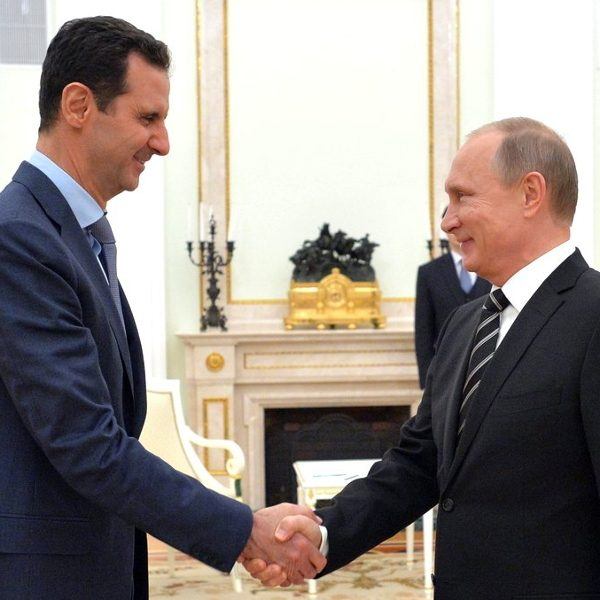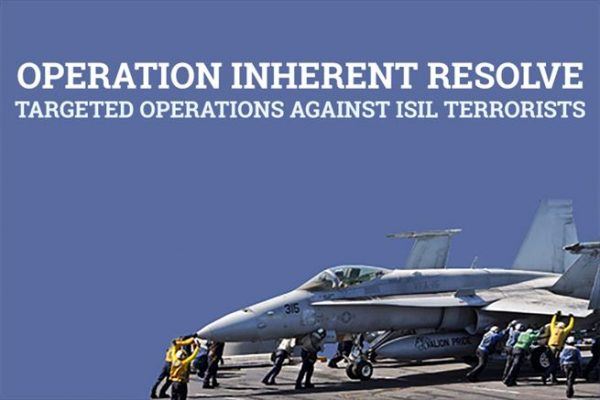Let me set this straight. If you have read any of the many articles I have authored here at OpsLens.com or looked at my Bio on Our Team, you will see that I am a hawk. Always have been. To me, the objective many times can be correctly answered by the proper use of force. I have never been one to suggest retreating from a fight.
Where I take issue is the fight itself and how we as a nation choose to conduct military operations. In this three-part series, I will address Syria in part one, and then Afghanistan and the Middle East in part two as a whole. Part three will propose a plausible innovative strategy for the way ahead. A vast subject to tackle but there are many similarities in both our reasons for involvement (or lack thereof) and how we as a nation have approached the problem in the Middle East. The one true message that history has tried to teach us over and over again is you cannot fight a war incrementally and ever hope to win. That has been the strategy in Syria.
Another Proxy War
Syria is an area that has been pushed and pulled for decades. Syria is now seen as the latest proxy war in which the world’s major powers are involved. It makes sense to fight the proxy wars, as they do little if any damage to the homeland and seem to end up being fought frequently in areas that are in the process of being destroyed internally by the ongoing conflict. Any damage done to the country by the major powers is hard to distinguish from the damage being inflicted on the people and the country’s infrastructure in the midst of civil war or public uprising by their own government.
That is the case in Syria. Conflicts have been almost perpetual, but this article only addresses the most recent conflict: the post-2011 uprising against the government of President Bashar al-Assad.
President Assad was hopeful his government could withstand the actions seen as the result of pro-democratic movements in the region. Nevertheless, the pro-democratic revolution came to Syria.
With the spread of the pro-democratic movement, Assad was faced with an unprecedented challenge to his authority. These demonstrations, peaceful at first, resulted in protests throughout Syria and thrust the government in crisis. In classic dictatorial fashion, the Syrian government used violence to suppress demonstrations, making extensive use of police, military, and paramilitary forces. Militias opposing the Assad government began to form in 2011. By 2012, the conflict in Syria had become a full-fledged civil war.
Uprising in Syria
The revolution in Syria was a natural effect of the wave of protest then sweeping through the Arab world. Rulers in Tunisia and Egypt had already been unseated by the popular revolution known as the Arab Spring.
Environmental factors played a significant role in Syria’s uprising. Between 2006 and 2010, Syria experienced a historic drought. The drought forced hundreds of thousands of farming families into poverty. No longer able to sustain themselves, this was the catalyst for mass migration of rural people to urban shantytowns.
In the poverty-stricken areas due to the effects of the drought, the rural province of Darʿā, a region in southern Syria, was the location of the first significant protests occurring in March 2011. The heavy-handed crackdown by the Assad government which resulted in the torturing of a group of children was the match that lit the fuse. Enraged people took to the street to demonstrate for political and economic reforms. Security forces responded harshly, conducting mass arrests and sometimes firing upon demonstrators. The violence of the regime’s response added visibility and momentum to the protesters’ cause, and within weeks similar nonviolent protests had begun to appear in cities around the country.
As the protests increased in strength and size, the regime responded with more massive force in a ratcheting effect of violence. The Assad government went so far as to seal off cities or neighborhoods that had become hubs of protest, such as Bāniyās or Homs, with tanks, artillery, and attack helicopters. They cut off utilities and communications.
Sides are Taken
As summer of 2011 rolled around, Syria’s regional neighbors and the global powers began to take sides and fall into one of two groups, mainly pro- or anti-Assad. The United States and the European Union were increasingly critical of Assad. Assad’s continued method of crackdowns pushed U.S. President Barack Obama and several European heads of state to call for Assad to step down. Adding to Assad’s problems, an anti-Assad bloc consisting of Qatar, Turkey, and Saudi Arabia formed in the last half of 2011. The United States, the EU, and the Arab League soon introduced sanctions targeting senior members of the Assad regime.

Meanwhile, Syria’s long-standing allies, Iran and Russia continued their support for Assad. Strategically, Syria was important for both the Iranian efforts to grow their influence in the region, as well as Russia’s desire for a market for arms and a Mediterranean port for naval operations. This, coupled with Putin’s fear of a radical Islamic uprising in his backyard, meant Russia is committed to supporting Assad for the time being. As a result, Syria became ripe for a proxy war between the world’s great and opposing powers.
Mission Creep
As we have seen again and again, where there is no clear objective, the battle and incremental policy adjustments are incident-driven. Hostages are taken. Airstrikes are launched. Some egregious act of barbarism is conducted, and more airstrikes are launched.

Under President Obama was a hint of regime change and a desire to remove President Assad, but that soon faded and other ideas crept into the Syrian battlefield. ISIL (ISIS in different locations) became the primary target. Again, airstrikes were employed. There was a move to train and equip local fighters to fight the war against ISIL. The training of Syrian fighters to go back into the country was an abysmal failure, with very few actually ever being trained and deployed back to the fight. When they did deploy back to Syria, they were almost always immediately overtaken, destroyed, or forced to surrender their U.S. supplied gear to the ISIL-affiliated groups in trade for safe passage.
Lines in the sand were drawn and crossed. Threats were made and remained hollow. The inevitable slow effect of mission creep raised its head. President Obama had always held that U.S. ground troops would not be part of the conflict in Iraq or Syria. But thousands of “advisers” were in Iraq and, soon, small detachments of “advisors” were quietly being sent to Syria. There were never enough troops to make a lasting difference. Restraints on their actions and the constant changing of priorities made those moves mostly ineffective and reactionary.
Granted, ISIL was being hurt from the air, but even here the U.S. airstrikes were limited in effect and number. Eventually, the threat of ISIL was pushed into a small area of the country. When the U.S. administration changed, and President Trump took the reins, the situation on the ground was little different.
What had changed is the troops in Iraq were no longer just advisors but were involved in the fight over ISIS-held territory. The troops in Iraq were in the middle of civil and sectarian strife. Fighting ISIS was the only cause that held that uneasy coalition together, and with ISIS mainly run out of Iraq and pushed into Syria, the Iraq mission was an effort looking for a purpose.
After a chemical weapons deployment by President Assad against those opposed to his government (remember, this started as a civil war), President Trump ordered cruise missile strikes. The strikes were coordinated with Russian forces in the region to assure no coalition forces would be in harm’s way. The missile strikes were mainly effective and seemed to halt the use of chemical weapons at least for a time.
Policy Change
Now with ISIL mainly contained, President Trump announced, reportedly without much consultation, the removal of the 2,000 U.S. troops from Syria. It should be noted that Congress never authorized U.S. troop involvement in Syria. President Trump’s decision to withdraw from Syria complies with the U.S. and international law. The U.S. went into Syria unilaterally without the approval of the United Nations. The U.S. made unilateral military moves before without United Nations approval, such as in Kosovo, Iraq, and Libya. But United Nations approval would have placed a good measure of legitimacy to the U.S. actions.
The U.S long ago abandoned the never-ending morphing of goals for being in Syria. The purpose of countering Iran cannot be won with 2,000 troops in Syria, and even though Assad is a brutal dictator, it is not the job or responsibility of the U.S. to militarily overthrow him.
The U.S. must have some consideration of our moral obligations to the Syrians that supported and fought alongside the U.S. in Syria. The U.S. will be involved in humanitarian assistance to civilians and accept our fair share of refugees. After all, we helped create them.
Should ISIL raise its head again and try to fill the vacuum that is created when the U.S. forces pull out, however small that actual space is, they can be handled through airstrikes and pointed efforts conducted by our forces across the border in Iraq.
The U.S. must take into consideration other factors. The Turkish military is currently poised to move into Syria to deal with what they perceive as a terrorist organization: the PKK (Kurdistan Workers’ Party). Turkey has been fighting the PKK and its Kurdish allies both within Turkey and from the Syrian border regions for years.
The presence of U.S. troops in the area has the potential of putting Turkish and U.S forces, two NATO allies, in direct conflict. President Trump’s policy shift of military intervention is well-timed and appropriate.
















